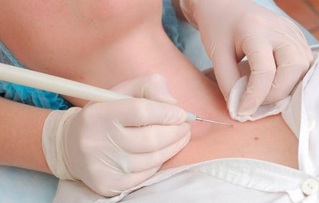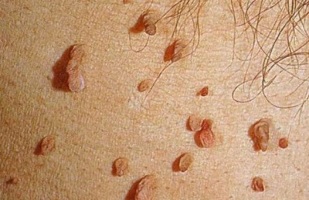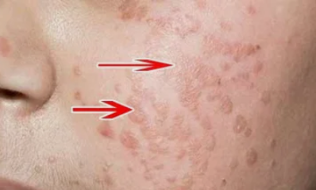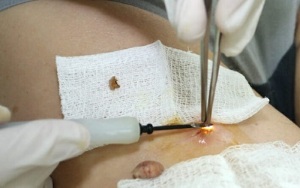
Human papilloma virus (HPV, HPV-human papilloma virus) or papilloma virus is a group of infections that includes more than 100 types of viruses, of which 80 are pathogenic to humans. According to the statistics of the World Health Organization, 70% of the world's population is HPV carriers. In most cases, the infection occurs after the onset of sexual activity and can be asymptomatic for a long time.
Causes of HPV infection
Symptoms of papillomavirus infection in women can be: various warts, flat and genital warts, cervical dysplasia. However, the most dangerous manifestation of the pathology is the development of cervical cancer. There is also evidence linking the development of cancers of the anus, external genitalia, vagina with infection with certain human papillomavirus (HPV 16, 18, 45, 56 type).
Transmission paths:
- Sexual contact.It is the main transmission route of human papillomavirus infection. Using condoms during sexual intercourse significantly reduces the risk of infection with the human papillomavirus, but since the viral particles are so small in size, it does not provide a reliable guarantee that infection will not occur.
- Communication path with home.Causes of infection are the use of common and intimate hygiene products: towels, soap, use of public toilet, bathroom.
- Natural birth.HPV can be transmitted to infected children as a child passes through an infected woman's birth canal.
The source of this infection are cells in the patient's skin and mucous membranes. In this case, a person may not know he or she is a carrier of the virus, because warts and papillomas can be microscopic in size and remain invisible during visual inspection.
Predictive factors contributing to the development of a viral infection:
- early onset of sexual activity;
- random sex without using condoms;
- frequent abortions;
- presence of infectious diseases of the genital organs; Long-term use of
- oral contraceptive methods;
- decreased body's immune response;
- non-compliance with personal hygiene rules;
- sexual partner has HPV;
- exposure to frequent stressful situations;
- bad habits.
The virus penetrates the basal layer of the epithelium through the pores, cracks, micro-traumas of the skin and mucous membranes, providing normal growth and regeneration of the skin and mucous membranes. The DNA of the basal layer cells (deoxyribonucleic acid) carries information about the healthy structure of the cells. A viral particle incorporated into DNA alters this information, causing the affected cells to form during the growth and division process, causing the symptoms of the disease.
Symptoms of human papilloma virus infection in women

One of the possible signs of human papilloma virus infection is the appearance of genital warts and papillomas. Cauliflower are specific formations that look like bunches of grapes or cock's comb, pink-red or tan. Depending on the type and type of virus, they can infect a person's skin and mucous membranes.
Genital warts can occur around or near the anus, especially if there is anal intercourse.
Papillomas can occur on the skin around the fingers and toes, hands, around the eyes, armpits, and scalp. Sometimes they also occur on the soles of the feet and cause a characteristic pain when walking.
This type of disease rarely turns into a malignant tumor and cancer, but the formations are surgically removed to prevent the disease from developing.
Results of HPV infection
Human papilloma virus in women can cause significant growth of genital warts, papillomas, flat warts, causing discomfort, pain, and bleeding of varying severity when injured.
HPVs of the eighteenth and sixteenth types are the most dangerous because they lead to cancer development. Cervical cancer, which is reliably linked to infection with human papilloma virus, ranks second among various malignant diseases in women. The death rate from him reaches 50 percent.
Flat warts

The disease is characterized by the formation of flat plaques that practically do not rise above the skin level.
Often the mucous membrane of the vagina and cervix is affected.
Cosmetic defect with them is much smaller than genital warts.
This type of pathology has a higher risk of turning into cancer.
Dysplasia of the mucous membrane of the cervix
Pathology is a change in the normal structure of cells in the mucous membrane of the cervix, called atypia. In gynecology, this condition is considered precancerous and requires observation and intensive treatment.
In most cases the disease is asymptomatic and is detected during a routine examination by a gynecologist. Several degrees of severe dysplasia are distinguished: mild, moderate, severe. The choice of treatment method depends on its severity.
Cervical cancer
This is the most dangerous manifestation of the disease. Cervical cancer ranks second among tumor pathologies in women and is associated with infection with HPV types 16, 18.
The disease can progress without clinical signs or present with nonspecific symptoms: weakness, increased fatigue, weight loss, the appearance of spotting bleeding from the vagina outside of the menstrual cycle.
Disease treatment methods
Given the danger of consequences, do not self-medicate if you have symptoms of HPV infection.
To choose the optimal treatment tactics, you need to consult a gynecologist who will recommend adequate treatment, after conducting a thorough examination and the necessary tests.
Until now, no drugs have been invented to cure HPV forever. The main goal of treatment is to reduce the concentration of virus in the body to prevent further progression of the disease.
Main treatment areas:
- treatment of symptoms (warts, papillomas, dysplasia);
- antiviral therapy;
- use of funds aimed at boosting immunity.
In the presence of papillomas, genital warts, warts, areas of dysplasia, even of small size, their removal is recommended, since the presence of neoplasms increases the concentration of viral particles in the woman's body, which contributes to the further progression of the pathology.
Surgical treatment
Methods to remove genital warts, papillomas, warts and dysplasia are as follows:
- surgery;
- cryotherapy;
- diathermocoagulation;
- laser coagulation;
- radio wave therapy;
- chemical attack.

The surgical method consists in removing the growths with a scalpel, it is the cheapest method of treatment, but after that a significant cosmetic defect remains and the recovery time is significantly prolonged. There is also a risk of secondary infection. Therefore, this type of intervention is used in extreme cases.
During cryotherapy, liquid nitrogen is applied to the affected area, which freezes the pathological formation. After a few days, the papilloma or condyloma disappears and a small wound forms beneath it, which heals within 10-14 days.
Diathermooagulation is the application of high temperatures to the affected skin areas. This procedure is quite painful and therefore requires anesthesia. The disadvantage of this method is the formation of rough scars instead of pathological formations.
During laser coagulation, the effect of laser beams on the affected area causes the neoplasms to dry out. A dry crust forms in their place and disappears without a trace after a while. This type of treatment is the most gentle, but its high cost is considered a disadvantage.
Radyowave therapy consists of exposing the affected area to radio frequency waves. When using this type of treatment, there is no risk of bleeding, no obvious scars, but the disadvantage is the high cost.
The chemical method is used when there is a small occurrence. A special medicine is applied to the affected area. After a few applications, a crust forms on the treated area, which disappears after a few days.
Drug Use
Drug therapy for human papillomavirus infection includes the use of the following drug groups:
- antiviral drugs;
- immunostimulants.
To reduce the concentration of the virus in a woman's body and prevent further growth, a long-term antiviral treatment is recommended. Medicines are used in the form of tablets and suppositories, the dosage and duration of the treatment course should be determined only by the attending physician.
Immunostimulants are prescribed after analysis and detection of a reduced level of immunity in order to increase the body's defenses, accelerate the process of emergence of immune cells and stimulate the production of antibodies aimed at fighting the virus.
Treatment of HPV infection in pregnant women
The presence of human papillomavirus infection in a woman's body does not affect the reproductive system and is not a contraindication to pregnancy. If HPV exacerbation occurs during pregnancy, treatment for this condition is not carried out during this period, treatment is prescribed after birth.
However, a woman should be monitored by a doctor throughout her pregnancy. With the development of severe ailment, gentle methods of treatment are prescribed. In extreme cases, cesarean section is performed when there are contraindications for vaginal delivery due to the progression of HPV.
Getting rid of HPV with folk remedies
At home, to get rid of warts, papillomas and warts that appear, you can use folk remedies such as herbal decoctions and infusions - for the treatment of papillomatosis, ointment.
Ways to prepare decoctions and infusions for the treatment of human papilloma virus infection:
- Horsetail, nettle, rosehip, dandelion roots, banana leaves are mixed in equal amounts. At 3 o'clock. l. Add 800 ml of water to the resulting mixture, boil for 10 minutes on low heat, then leave to infuse for 3 hours. Apply 1 glass 3 times a day 30 minutes before meals.
- Thyme grass, yarrow, immortelle St. John's wort, birch buds, nettle, calendula, coltsfoot, burnet roots, chamomile flowers, twine, banana leaves, celandine, linden flowers, cumin seeds, sage are mixed in equal amounts. Pour 2 tablespoons into a thermos. l. the resulting mixture pour 500 ml of boiling water, leave to infuse overnight. Take 0. 5 glasses 4 times a day.
- Valerian root, lemon balm, thyme, lime flowers, hops cones, motherwort are mixed in equal amounts. Pour 1 tablespoon into thermos. l. the resulting mixture pour 0. 5 liters of boiling water and leave to infuse for 3-5 hours. Apply 250 ml 2 times a day.
For the handling of local symptoms, apply:
- Celandine juice. The juice is made from fresh leaves or purchased at a pharmacy. Before applying the product, the skin of the affected area should be steamed and healthy areas near the affected area should be treated with an oil cream. Celandine should be applied carefully to the affected skin. The procedure should be repeated every two days for a week until the pathological formation disappears.
- Garlic. Vegetable should be grated on a fine grater and mixed with skin cream until a thick consistency is formed. Apply the resulting mixture to the formation areas for 2-3 hours every day for a month. After the procedure, wash the skin with soapy water.
- Young walnuts. It must be crushed with a meat grinder, pour the resulting mixture into a 0. 5-liter glass jar so that it fills 2/3, pour the rest of the container with kerosene. Let it steep for 20 days, then strain through cheesecloth. Infusion to treat the affected skin 2 times a day.
After recovering from therapy and the external symptoms of HPV, a woman needs to visit a gynecologist every six months to monitor and prevent further progression of the disease.















































































